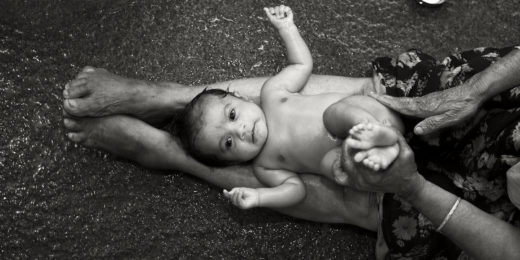There isn't a 4-year-old alive who hasn't bumped his or her head. It's usually no biggie -- kids are active. But when Carter Henley was hit in the head at a T-ball game, it set off a series of events that revealed something that preschoolers rarely reckon with: a brain tumor.
Carter ran headfirst into another child while trying to catch a ball. He appeared fine, except for a large bump on his head, until the next day, when he threw up at lunchtime.
"It was like alarm bells in my head," his mom, Katie Henley, said. ... "I've always ridden horses, and that's one of the first things you think about -- if you fall, hit your head, and throw up, you need to go to the ER and get it checked out."
So Patrick Henley, Carter's dad, took Carter to their local emergency room, where doctors ran some scans. The following is an excerpt from a recent story published by Stanford Children's Health:
"The doctor said, 'Well, there's no concussion, but he has a brain tumor,'" Carter's dad remembered. "It was the scariest moment of both of our lives."
Carter's parents had a million questions race through their mind: Is he going to have a normal life? What are the long-lasting effects? Will he be able to play T-ball or ride a bike again?
Thankfully, the Henleys have relatives who are in the health care field. "We called them, and my father said, 'You're taking him to Stanford Children's Health,'" Katie Henley said.
At Stanford Children's, the family met with pediatric surgeon Kelly Mahaney, MD, who told them that Carter had a rare type of benign brain tumor. It was good -- and quite lucky -- that they caught it early, Mahaney told them; the tumor was small, but its growth was unpredictable.
"The skull is a fixed cavity. And if there's something else taking up room within the skull, that means less room for the brain," Mahaney explained. "If it's in an area where it's blocking normal flow of brain and spinal fluid, it wouldn't take much growth for it to block off the fluid space and cause a condition called hydrocephalus, which if left untreated is lethal."
So she recommended surgery to remove the mass.
"I think it's always challenging to meet with a family and explain to them that even though their child looks perfect and is not having symptoms, their child needs surgery," Mahaney said. "That's why this family is so amazing. I sat down with them, reviewed the MRI, explained the rationale for surgery and the process of the surgery and the hospital stay. Ultimately, they put their trust in me and our team."
Photo courtesy of Henley family and Stanford Children's Health






